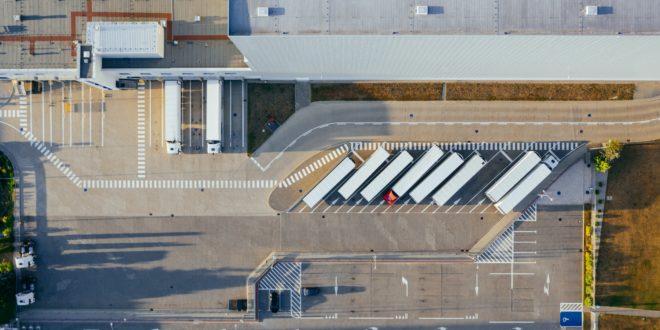
Domestic transport carbon emissions account for around 38% of all emissions – the eCommerce and logistics industry is booming, and the public transport industry is in crisis.
What is being done to mitigate the carbon emissions caused by transportation? Keep reading to learn about the transport industry trends helping to lower CO2 emissions and improve the outlook for the future.
Rethinking Commuting
The pandemic brought many changes, including the increasing adoption of cloud-based technologies to support remote working. With these new technologies already in effect, businesses in cities are rethinking their attitudes toward commuting.
When employees commute to work, they face the following challenges and difficulties:
- Increased costs – commuting to work is expensive. Fuel, train tickets, and bus fares can take a serious chunk of your employees’ paychecks.
- Wasted time – commuting can add around 2 hours to your employees’ work days. This means less time relaxing, less time spent with family, and a lower quality of life.
- Environmental impact – when a person commutes to work, their CO2 emissions can increase significantly. And, if hundreds of employees are commuting to work daily, your company is directly responsible for a large number of carbon emissions.
For these reasons, businesses are considering switching the rules. Companies allow remote work for employees who do not live in the city. These employees will have the most difficulty getting to work in the morning, whereas those living in the city can work efficiently. However, when switching to remote work models, employees must learn how to work from home sustainably to lower their energy consumption.
Smart Cars And Vehicles
Governments are beginning to recognize the sustainability and environmental issues caused by petrol-fuelled vehicles. By generating all power from a single source, you can reduce vehicle efficiency issues that will lead to increased fuel consumption.
Many governments are shifting towards smart car policies for the future and plan to make it mandatory for citizens to purchase only electric vehicles. These policies will take action decades in the future but will lower transport-related CO2 emissions drastically.
Planning Delivery Routes More Sustainably
In recent years, the online shopping and eCommerce industries have drastically spiked. This means more delivery trucks and drivers are on the roads, delivering customers their packages and goods. However, with the increased demand for delivery drivers, logistics companies need to think more sustainably. Logistics companies and delivery services are investing in tools and technologies to help them plan routes with fuel economy in mind, allowing for a more sustainable future in the industry.
Exploring Sustainable Transport
During the pandemic, public and private-hire transport became unusable for those wishing to self-isolate and protect their health. For this reason, many people invested in transport options like bikes and electric scooters to speed up their journeys.
Many city and town planning initiatives are looking towards more accommodating roads to promote sustainable transport options. Allowing for bike lanes and improved pedestrian travel will help encourage the use of more sustainable transport options.
Dropping the Use Of Public Transport
As mentioned earlier, civilians feel less safe using public transport following the pandemic, leading to a crisis in the public transport sector. In response to the declining demand for public transport, we see lower budgets, fewer staff members, and limited public transport offerings in some parts of the country. Public transport is an excellent way to reduce individual carbon emissions, and the state of public transport is causing concern for environmental specialists.
Increasing Consumer Awareness
eCommerce companies are attempting to increase consumer awareness regarding greener shopping habits. For instance, companies are sending customers alerts and reminders that bundling their orders will help to save the planet and reduce the environmental impact of their online shopping habits.
Additionally, companies remind their customers that following or same-day delivery options can be more damaging to the environment than second-day deliveries. Improving the customer’s awareness of the environmental impact can encourage them to make more conscious choices. Opting for lighter items, like boxed water, can help customers to reduce the weight of their orders and, thus, the fuel consumption required to deliver them.
Companies are also highlighting the environmental impact of failed or returned deliveries to promote more ethical decisions from their consumers. While companies retain a certain level of responsibility for their carbon emissions, consumers should accept their part in the industry’s CO2 emissions.
Increased Efficiency In The Air Freight Sector
The air freight sector is a considerable component in the success of eCommerce and retail industries. To limit the environmental impact of air freight, we are seeing the following efforts:
- More sustainable fuel – more sustainable sources, such as algae, feedstock, and carbon waste, create air freight fuel. This more sustainable fuel option allows continued operations with lowered environmental impact.
- More efficient aircraft – to reduce how much fuel is consumed in the air freight process, companies like UPS and FedEx are investing in more efficient aircraft options to improve the carbon footprint caused by the industry.
- Unit load devices – companies are investing in unit load devices that can help aircraft to fit more cargo in one trip, ultimately reducing the number of trips required in freight shipping.
Even with these efforts, however, there is still a significant amount of carbon emissions caused by the air freight sector.
Summary
Transport-related CO2 emissions account for a large percentage of overall emissions. The government and eCommerce and logistics companies are taking steps to mitigate their impact on global sustainability. Although these trends and technologies are helping to lower the effect, they may not be enough to support a sustainable future.
- SEO Powered Content & PR Distribution. Get Amplified Today.
- Platoblockchain. Web3 Metaverse Intelligence. Knowledge Amplified. Access Here.
- Source: https://usgreentechnology.com/the-trends-impacting-transport-related-co2-emissions/



